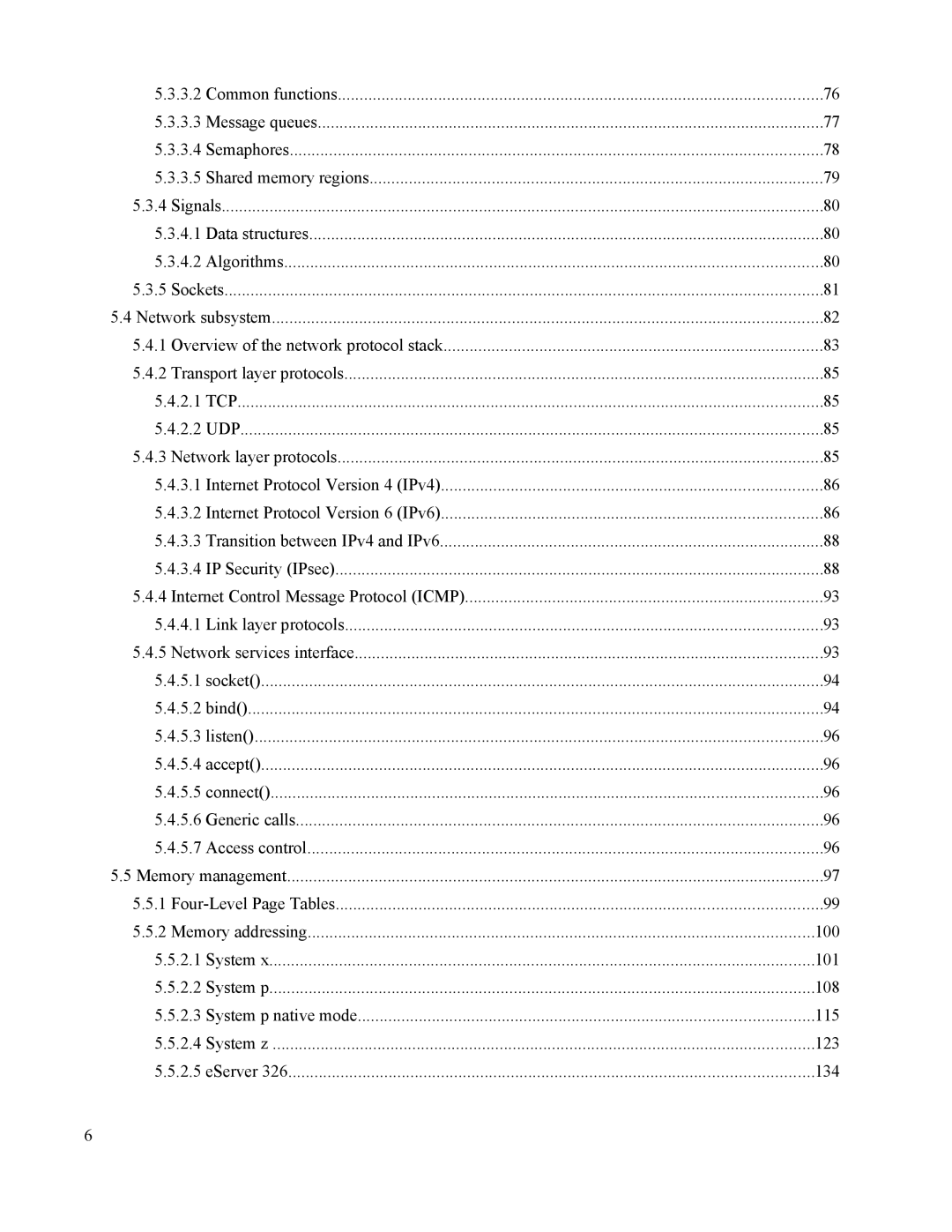5.3.3.2 Common functions | 76 |
5.3.3.3 Message queues | 77 |
5.3.3.4 Semaphores | 78 |
5.3.3.5 Shared memory regions | 79 |
5.3.4 Signals | 80 |
5.3.4.1 Data structures | 80 |
5.3.4.2 Algorithms | 80 |
5.3.5 Sockets | 81 |
5.4 Network subsystem | 82 |
5.4.1 Overview of the network protocol stack | 83 |
5.4.2 Transport layer protocols | 85 |
5.4.2.1 TCP | 85 |
5.4.2.2 UDP | 85 |
5.4.3 Network layer protocols | 85 |
5.4.3.1 Internet Protocol Version 4 (IPv4) | 86 |
5.4.3.2 Internet Protocol Version 6 (IPv6) | 86 |
5.4.3.3 Transition between IPv4 and IPv6 | 88 |
5.4.3.4 IP Security (IPsec) | 88 |
5.4.4 Internet Control Message Protocol (ICMP) | 93 |
5.4.4.1 Link layer protocols | 93 |
5.4.5 Network services interface | 93 |
5.4.5.1 socket() | 94 |
5.4.5.2 bind() | 94 |
5.4.5.3 listen() | 96 |
5.4.5.4 accept() | 96 |
5.4.5.5 connect() | 96 |
5.4.5.6 Generic calls | 96 |
5.4.5.7 Access control | 96 |
5.5 Memory management | 97 |
5.5.1 | 99 |
5.5.2 Memory addressing | 100 |
5.5.2.1 System x | 101 |
5.5.2.2 System p | 108 |
5.5.2.3 System p native mode | 115 |
5.5.2.4 System z | 123 |
5.5.2.5 eServer 326 | 134 |
6
